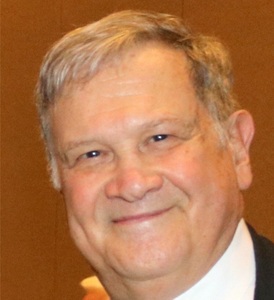by Jim Folger, Goals & Research Committee Chairperson
The results are in for the March 2021 membership survey. A total of 200 members completed the survey representing some 60% of our 330 members, and was the highest number of respondents ever recorded for a NTMN membership survey.
The results and subsequent insights gained in the opinions of those who responded will be used by committees and the board in future decision-making as we make our way out of the pandemic. While not shown in the following, the verbatim responses for other opportunities for volunteer projects, reasons to be less active in the chapter, things you would like us to know about chapter activities or recommendations re: general meeting locations, will be thoroughly reviewed for thoughts and ideas.
Following are the Findings and Implications based on an analysis of the responses to all the questions. They are grouped under the categories of General Meetings, Volunteering, Other Chapter Issues and Demographics. If you have any questions or would like further details, the Goals & Research Committee as well as every board member has a copy of the final results.
General Meetings
- When it comes to acceptable ways to hold a meeting, 70% of the membership is most accepting of the live virtual meetings, while over half the chapter is open to meet at one or multiple locations.
- Implications: While virtual meetings are the most preferred way to conduct future meetings, it is apparent that flexibility is needed in meeting the needs of members. Meeting in person, at multiple locations, and recording the meetings, are all acceptable to members.
- Almost 75% of members would find the video recordings of general meeting speakers to be valuable to them, even though they would not receive AT credit for viewing them. This contrasts sharply with the 2018 membership survey where only 41% would find video recordings valuable (when the issue of AT was not even mentioned).
- A total of 83% of respondents would find speaker evaluation forms to be “Very” or “Somewhat” Valuable.
- Implications: Speaker evaluation forms need to be re-instituted as a way to gauge the presentation quality and perceived value of topics that are presented at general meetings.
- A majority (63%) of members would accept alternating meeting locations between Monday and Wednesday. This result is similar to the response received in 2016 (61%), and below the 75% recorded for the question in 2018.
- Implications: There is no one day that is perfect for conducting meetings. This situation has existed for a long time. From the verbatim responses in question 23, several people indicated a desire to have a fixed date to plan out their schedules. With virtual streaming and recording, it may be easiest to retain the first Wednesday as the date and time.
- Fully 65% of members would find brown-bag dinners to be “Very” Acceptable, and another 22% “Somewhat” Acceptable, for a combined 87% total Acceptance. In 2018, 64% of members said it was either “Not Very” or “Not At All” Important to have food at meetings.
- Implications: This acceptance should prove most valuable where there are locations that do not permit potluck or have cooking facilities.
- A small group (9%) of members would attend general meetings wherever and whenever they were held. Another 36% would “Somewhat” Agree with that, while 47% would Disagree.
- Implications: Again, more support for having a variety of options available to meet the needs of all members.
Volunteering
- The vast majority (83%) of respondents said they signed up to be a master naturalist for the combined reason of obtaining naturalist education and volunteering. Given up to 3 choices, 54% said the education was an important reason, followed by 42% “education and supporting a volunteering program they were interested in,” with 32% saying retirement gave them time, and another 17% adding that it related to their professional career.
- Implications: Education is the main driver of involvement in he chapter, with volunteering a secondary but still important aspect.
- Two-thirds of respondents say it would be important to have more one-time big chapter projects on the weekends. This is similar to the 63% that was recorded for this same question in 2018.
- Implications: Explore the possibility of adopting a quarterly BCP on Saturdays. This will help working members to get in their volunteer hours, as well as add to the social aspect of the chapter.
- When asked about other projects that might be suggested, there were some 51 separate responses, but no consistent threads related to them. Respondents showed interest in working with more non-profits, city parks, and community organizations. There were also comments about more opportunities in under-served areas (West and South Dallas).
- When asked about reasons that they might become less active in the chapter, 26% said “too busy at work,” and similarly 18% said “no time to volunteer.” Some 20% said “lack of volunteer opportunities that appeal to me,” 17% said “there are other important things I want to do with my life.” Only 5% stated that “my efforts are not appreciated.” From the additional verbatim responses the major comments centered on available locations and times, health related issues, and some lack of connection with people issues.
For the most part, members are as active as they want to be. This was similar to the responses to the question in 2014 and 2018. Reflective of our growing segment of employed persons, time limits participation. The second most important in 2014 and 2008 was “opportunities that are close to me.”
Other Chapter Issues
- Overall the chapter does an excellent (25%) or very good (49%) job of reaching out to new members. The combined 74% exceeds the combined 66% recorded for the question in 2014 and the 63% recorded in 2008.
- Implications: The chapter has improved it’s connection with new members over the last thirteen years. While not part of the 2021 survey the less active members are the ones who would suggest we do a “poor” job as was recorded in that separate group in 2008.
- When asked about the importance of placing more focus on youth education activities, 80% of members agreed it was important, with 40% saying it was “Very Important” and another 40% saying it was “Somewhat Important.”
- Implications: Re-focus volunteer efforts on educating and working with youth. Assess which current volunteer efforts have to do with interacting with young people.
- For sources of information on chapter activities. Emails ranks #1 at 87%, followed by the website calendar at 75%. The Dragonflyer and Announcements emailed the day after the general meeting come next at 55% and 53% respectively, followed by Announcements at the general meeting (43%) and Facebook at 32%.
- It is useful to note that in two prior surveys completed in 2014, those who were physically at the general meeting listed their top three choices to make the meetings more valuable to them as “regular reviews of volunteer opportunities,” “more interesting speakers,” and “Q&A options.” At the same time the number one reason to make the meetings more valuable among those who took the separate on-line survey (of people who did not attend the meeting) said “spend less time on announcements.”
- Implications: The relatively lower interest in actual announcements at the general meeting suggests curtailing the time devoted to that part of the meeting.
- Two-thirds of members surveyed use Facebook, with only 13% using Twitter and 29% using Instagram. A full 30% use none of these social media tools. This compares very closely to 2016, except that use of Instagram was only 11% then.
Demographics
- Age breakdowns show 39% over the age of 65, and another 37% from 50-64, for a total of 76%. In 2018, the comparative combined figure was 87% (with 50% 65+ and 37% 50-64), and in 2014 it was 85%. The 18-49 year-olds accounted for 23% in 2021 compared to only 13% in 2018.
- Implications: The profile of the chapter membership continues to become younger
- Employment status indicated 42% of members work full time, and 14% part-time, with 42% retired. In 2014, only 26% worked full time and 23% worked part-time, with 50% retired.
- Implications: More attention needs to be given to accommodating the working people with volunteer times and opportunities to encourage them to stay engaged.
- Based on class information, 57% of the responding members are from the last 5 years of classes. There are only 11% of the membership represented by the first 12 years of NTMN, and another 32% from the classes 2010 to 2015.
- Sixty-nine percent of the membership is female and 27% is male. This shows little change since 2018 (66/34%), 2014 (74/26%), and 2008 (71/29%).
- There were 10 people who indicated they were of Latino or Spanish origin.
- Out of the 194 people who answered the “how would you describe yourself” question, 162 said “White,” and 19 preferred not to answer. There were 12 other responses representing 10 different descriptions.
- Eleven people indicated they are part of the LGBTQIA community.
- Regarding marital status, 63% are married or in a domestic relationship.
 North Texas Master Naturalist
North Texas Master Naturalist
